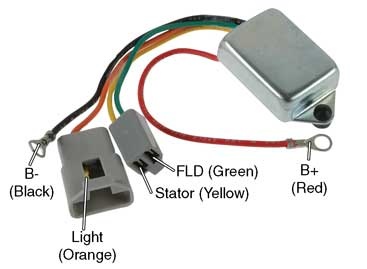I have to tell you, 66, that most charging issues ARE NOT caused by the regulator, but rather harness problems as well as poor grounding.
If for example, you hooked that very setup you pictured to an old rig with poor connections in the ammeter/ bulkhead connector circuit, you might just find that it doesn't work very well, either.
Not only that by now you have the regulator VERY close to the headers/ exhaust, and NO "one wire" properly regulates as well as a separate sensing wire UNLESS the charging wire is substantially oversized. If you read Delco's advice on "one wire" setups, they all use pretty big, IE no8 or larger charging wire, even on some of the smaller units.
The further the battery is away from the alternator, the worse this gets.
My other question is, "where do you get these?" If one quits at an inconvenient time, can you get one at NAPA? O'Reallys?


















